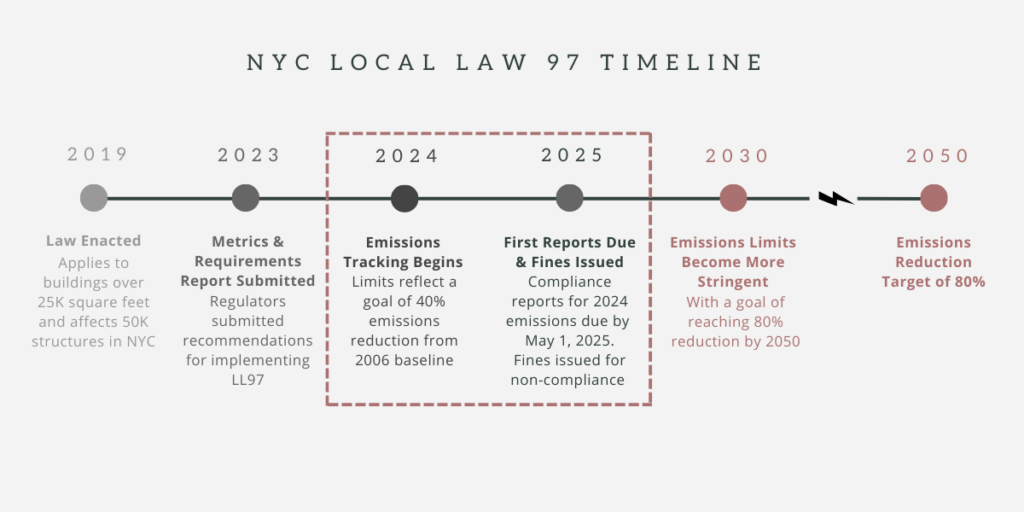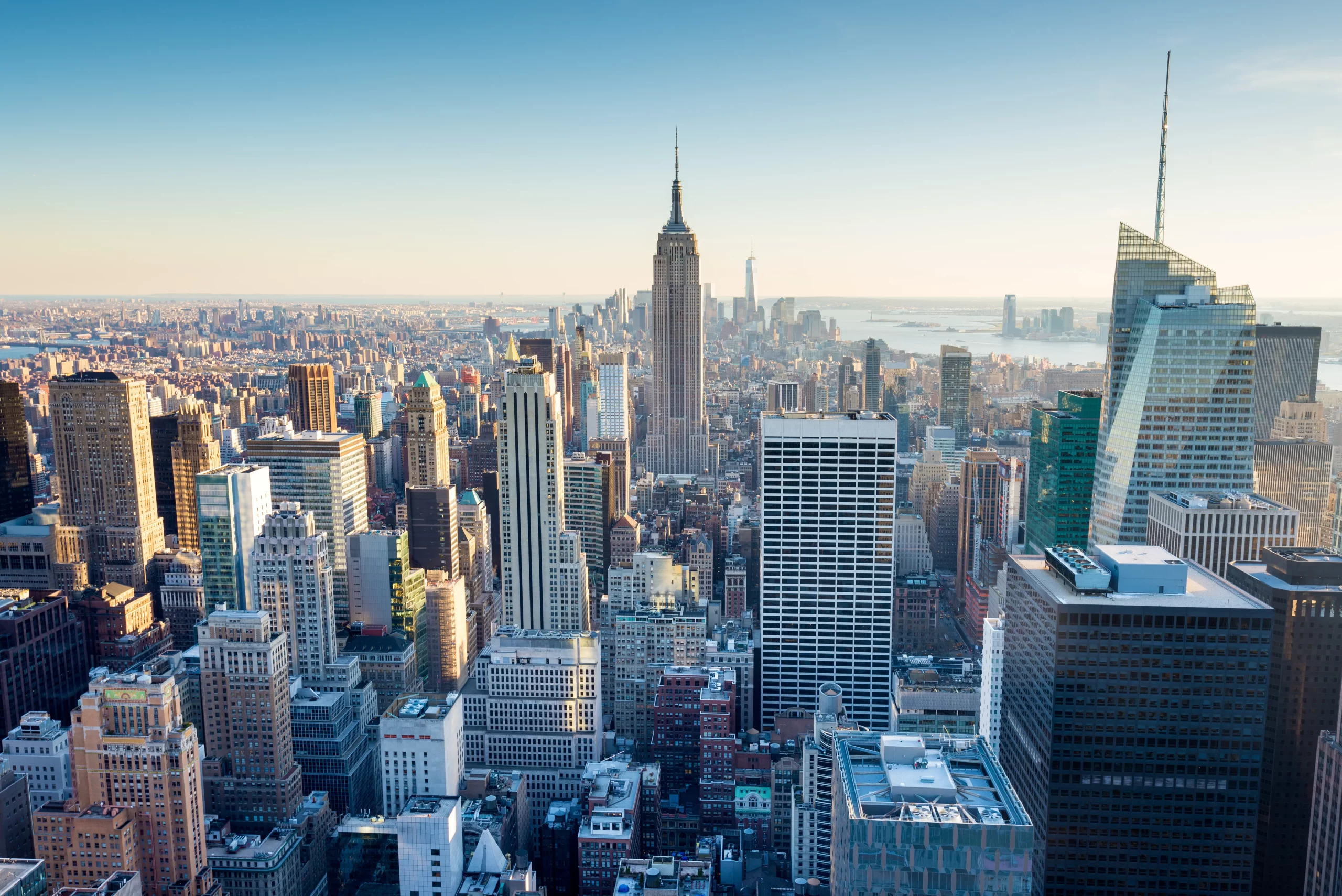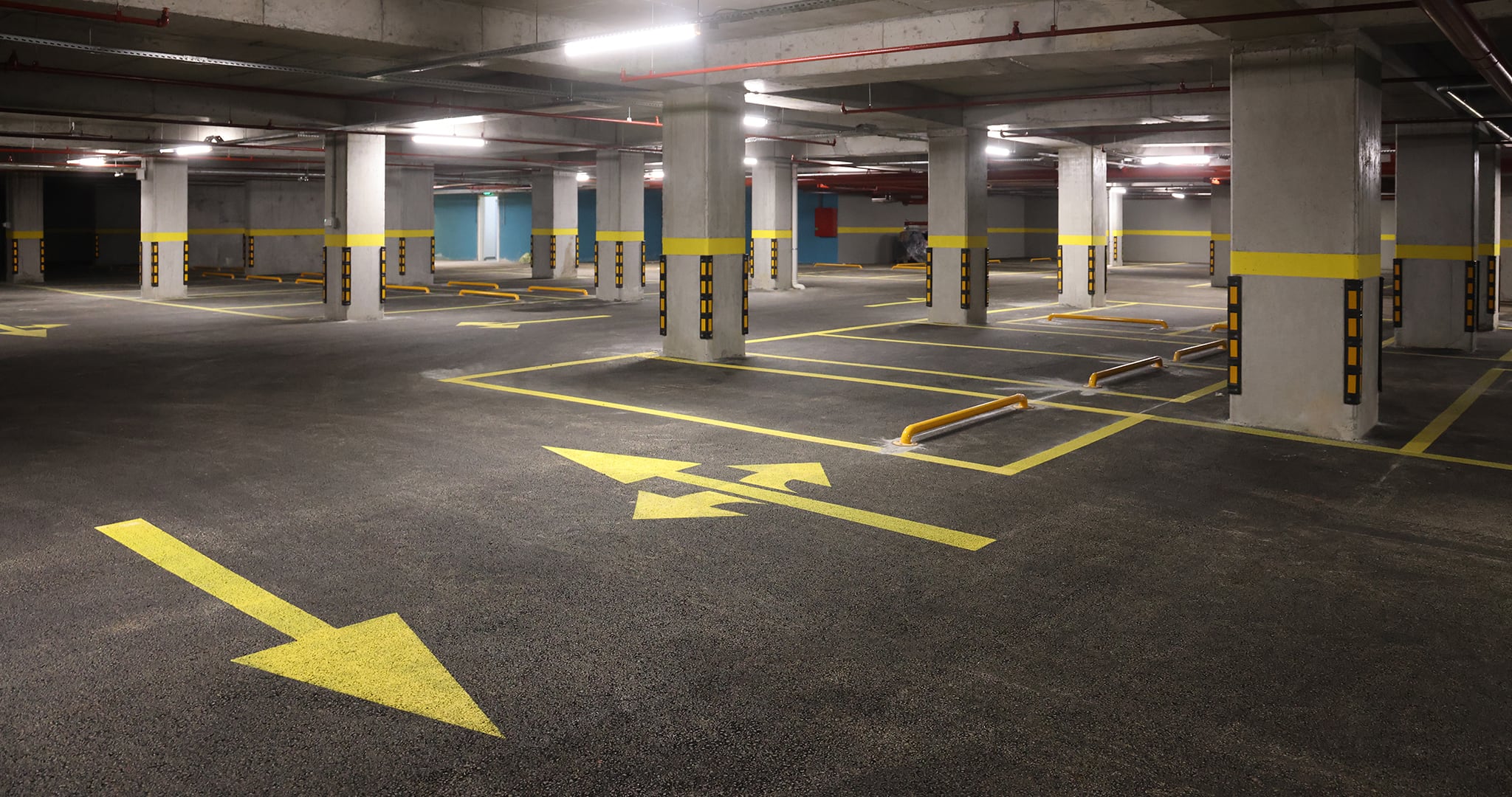Local Law 97 is a major New York City regulation requiring buildings to reduce carbon emissions or face steep penalties. As part of the city’s climate action plan, Local Law 97 impacts most residential and commercial properties, including condos, co-ops, and large real estate portfolios. If you own or manage a building in NYC, understanding Local Law 97 compliance is essential to avoid fines and ensure long-term energy efficiency.
What Is Local Law 97?
Enacted as part of New York City’s Climate Mobilization Act in 2019, Local Law 97 sets emissions limits on buildings larger than 25,000 square feet. The law is a cornerstone of the city’s plan to cut greenhouse gas emissions 40% by 2030 and 80% by 2050.
Who Needs to Comply?
- Residential buildings over 25,000 sq ft
- Commercial properties
- Mixed-use buildings
- Two or more buildings on the same tax lot that exceed 50,000 sq ft combined
Some buildings are exempt, including those with more than 35% affordable housing, places of worship, and certain NYC Housing Authority properties.
Local Law 97 Deadlines
Buildings covered by Local Law 97 must file their first emissions report with the Department of Buildings (DOB) by May 1, 2025, and annually every year after. These reports must be certified by a registered design professional.
Failing to meet these deadlines or emissions limits could result in fines of $268 per metric ton of CO2e over the building’s limit.

Key Compliance Steps
- Benchmark Your Current Emissions: Use past utility data to assess your current carbon footprint.
- Hire an Energy Auditor or Consultant: A professional can help identify where you stand and what retrofits are necessary.
- Implement Energy Efficiency Upgrades: Consider upgrades such as LED lighting, HVAC system optimization, and building envelope improvements.
- Submit Required Documentation: Ensure timely and accurate reporting to the NYC DOB.
Penalties for Non-Compliance
Buildings that exceed their emissions limits will face steep penalties. Additionally, failing to file the annual report can result in monthly fines until the report is submitted.
How to Prepare Your Building
- Conduct an energy audit
- Invest in retrofits
- Educate your tenants
- Monitor ongoing emissions using smart building technology
Tools and Resources
- NYC Accelerator: Offers free help to buildings looking to comply
- ENERGY STAR Portfolio Manager
- Local Law 97 Emissions Calculator
Frequently Asked Questions
What is the penalty for not complying with Local Law 97?
A fine of $268 per metric ton over the emissions limit.
Can I get an extension or exemption?
Some buildings may qualify for adjustments, but you must apply through the DOB with proper documentation.
Is Local Law 97 only for NYC?
Yes, it specifically applies to buildings within the five boroughs of New York City.
How SFE Engineering Can Help with Local Law 97 Compliance
At SFE Engineering, we specialize in guiding building owners and property managers through every step of Local Law 97 compliance. Our team of certified engineers and energy consultants can:
- Perform detailed energy audits to assess current emissions
- Develop customized compliance strategies
- Recommend and implement cost-effective retrofits
- Prepare and submit all required documentation to the DOB
- Monitor ongoing performance to ensure long-term compliance
We understand the complexities of Local Law 97 and work closely with clients to simplify the process, reduce risk, and protect property value. Whether you’re just getting started or need support with reporting, SFE Engineering is your partner in achieving sustainable, compliant operations.



